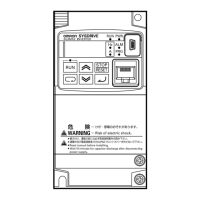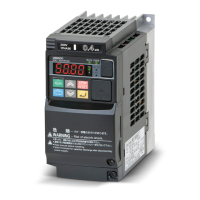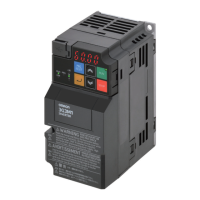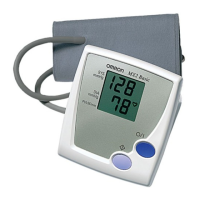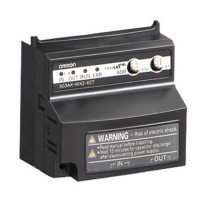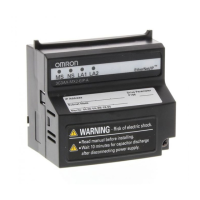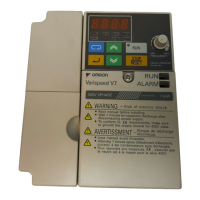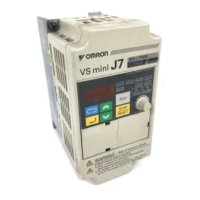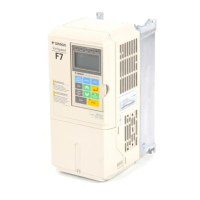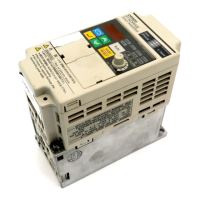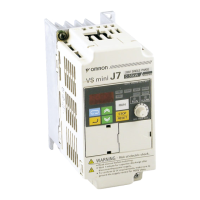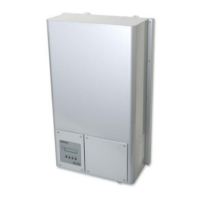6-5-3 Protective Detection under V/f Control with Speed Feedback
The V/f control with speed feedback performs the following protective detection based on the speed
feedback data.
Use these functions according to your application.
⚫
Overspeed error detection
If the speed feedback value exceeds the value set in the Overspeed Error Detection Level (P026),
the inverter detects the E81. (Overspeed error) and shuts off the output (trip). Set the detection
level appropriately depending on the maximum speed allowable for your application.
⚫
Speed deviation excessive detection
If the deviation of the actual frequency from the frequency reference value exceeds the value set in
the Speed Deviation Excessive Level (P027), the inverter outputs the excessive speed deviation sig-
nal (DSE). Although the inverter outputs this signal, it does not shut off its output (trip).
In this case, set the Multi-function Output 11/12 Selection (C021/C022), or the Multi-function Relay
Output (AL1, AL2) Function Selection (C026), to 22 (DSE: Excessive speed deviation). In addition,
construct such a sequence that stops the control if the inverter outputs the excessive speed devia-
tion signal (DSE).
⚫
Encoder disconnection detection
When the inverter outputs the frequency set in the Creep Speed Setting (P015) or higher, if the
speed feedback value does not reach the Starting Frequency (b082) within the Encoder Disconnec-
tion Detection Time (P077), the inverter detects the E80. (Encoder disconnection error) and shuts
off the output (trip).
If the inverter falsely detects this error, for example, when it operates with a heavy load and is slow
to start, some adjustment is required. Use the Creep Speed Setting (P015) and Encoder Disconnec-
tion Detection Time (P077) to set speed and time values that allow the inverter to start stably in your
application.
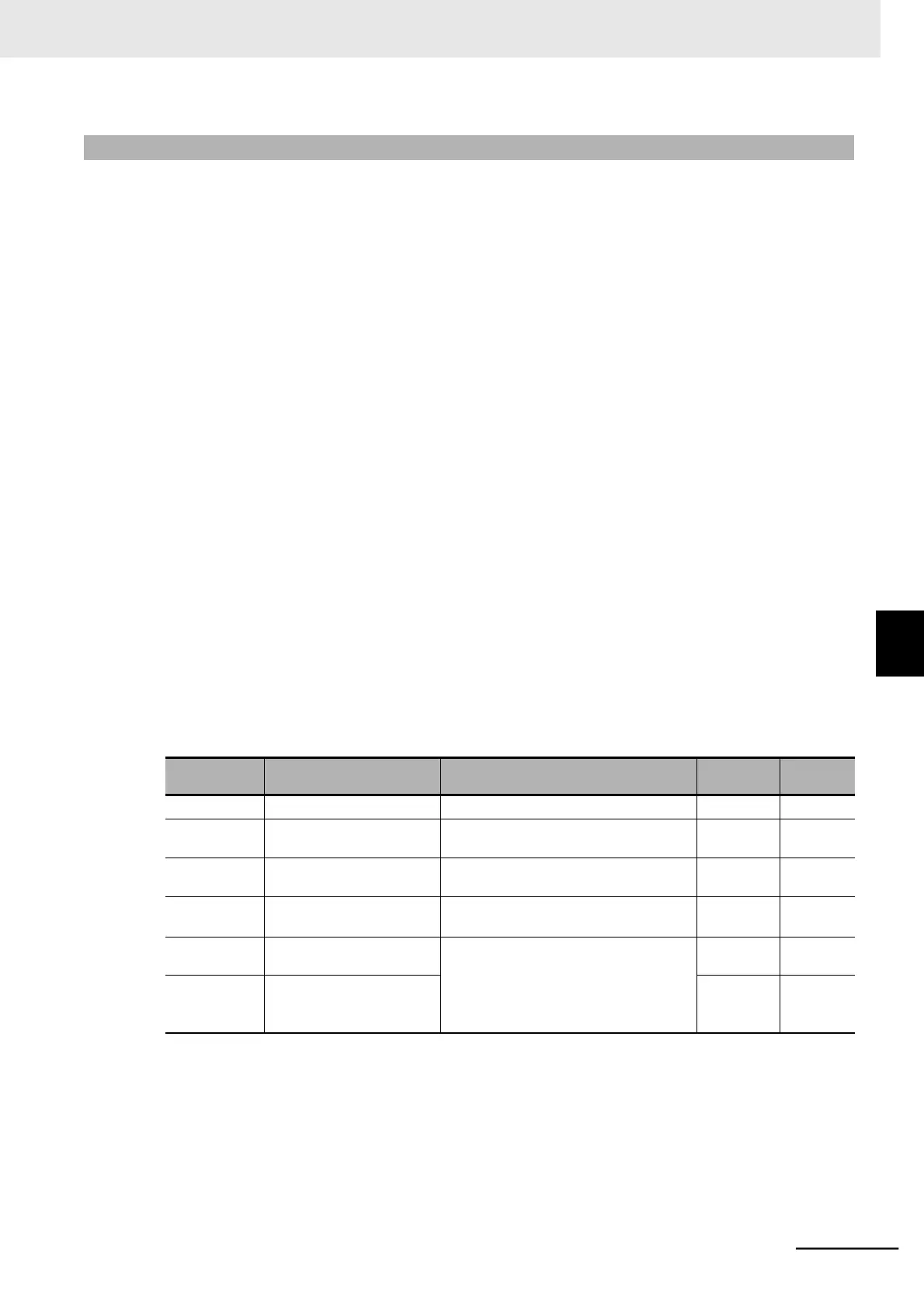